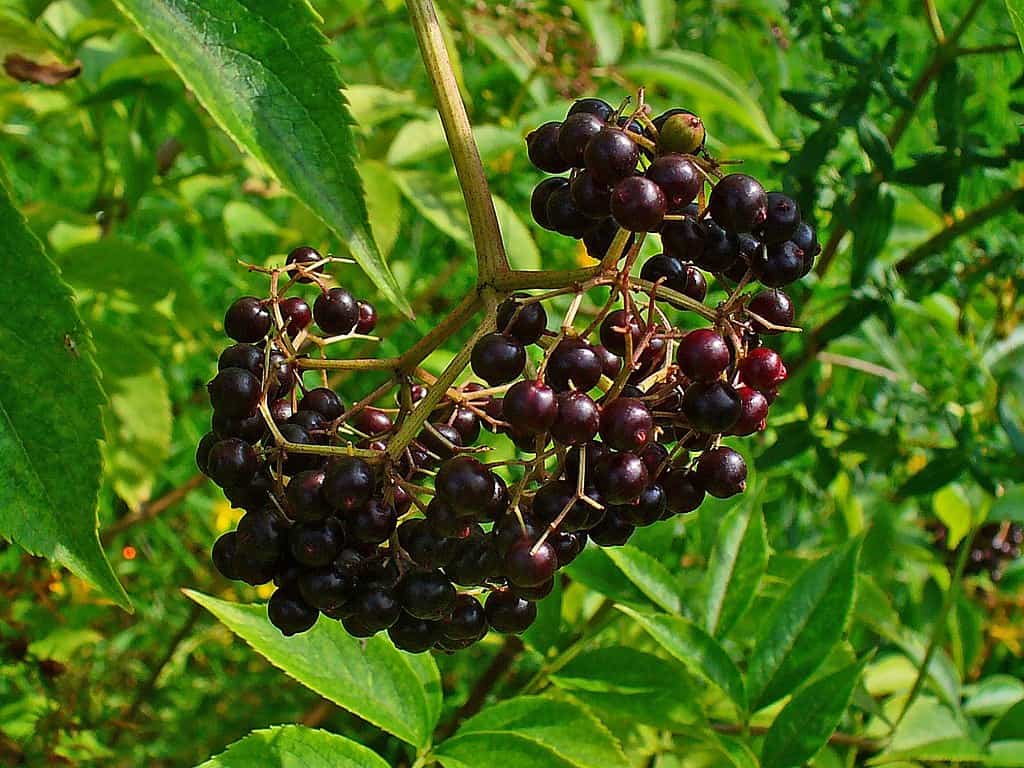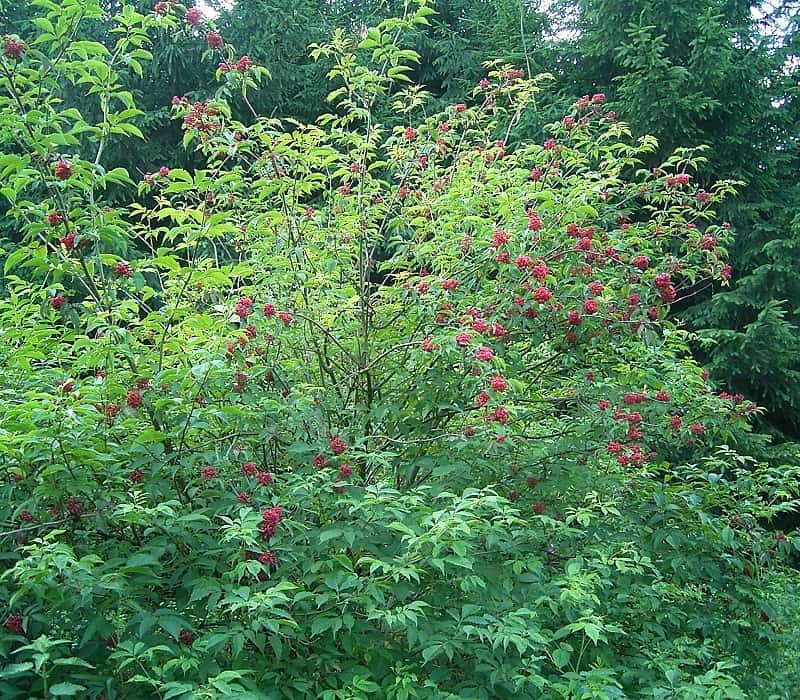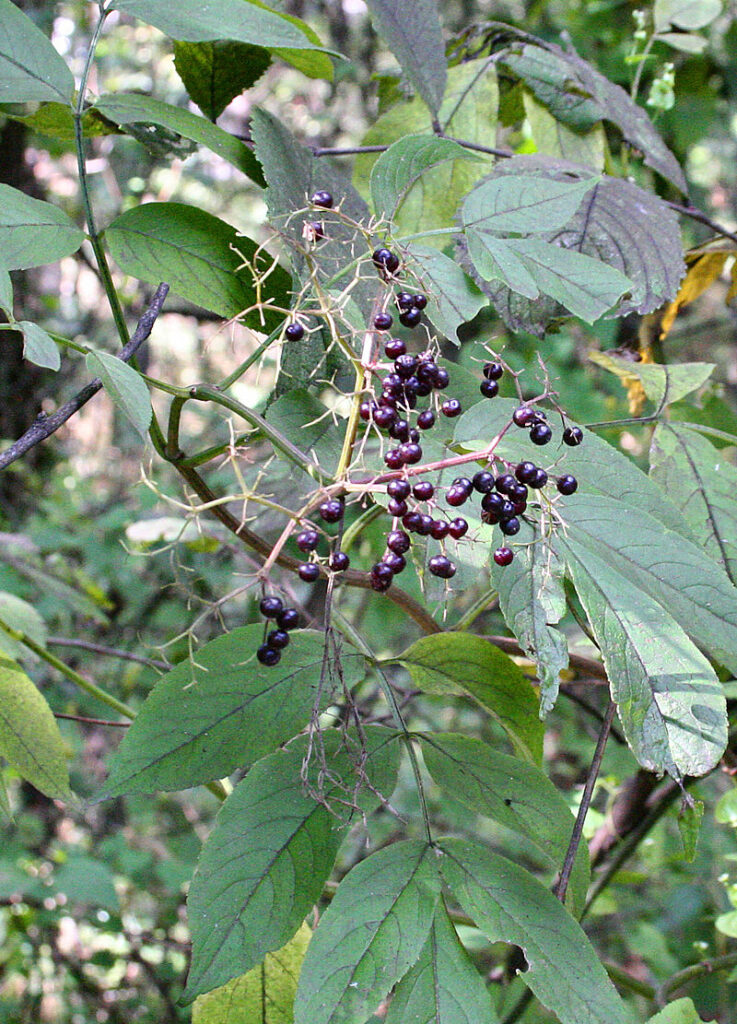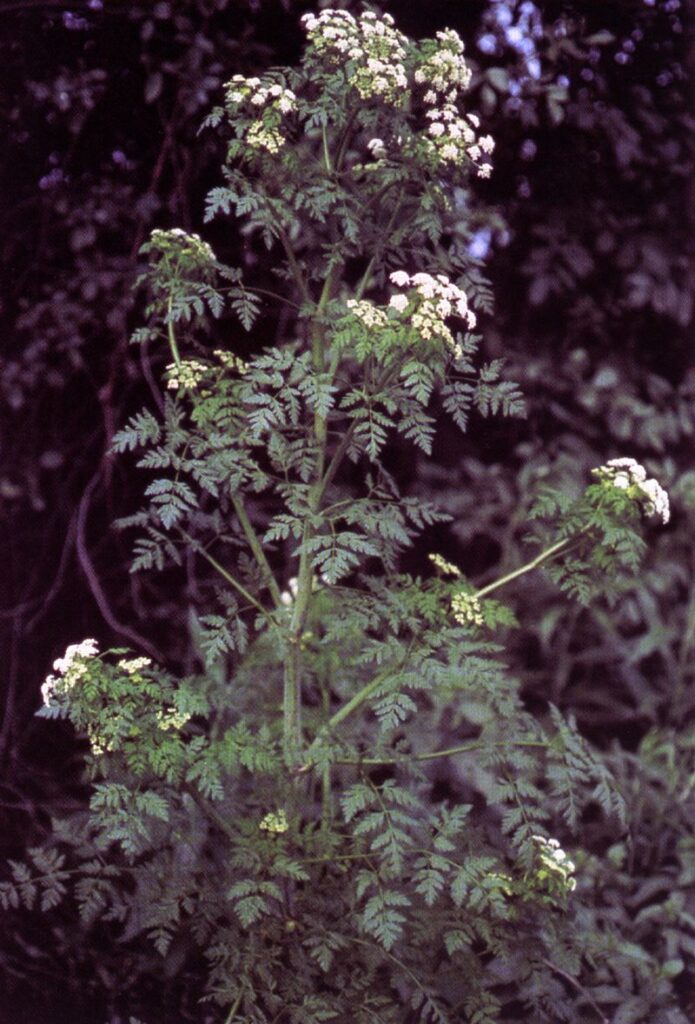When it comes to edible wild berries, there aren’t that many topics of debate. Can you eat a wild blueberry? Absolutely. Can you eat wild chokecherries? Sure, but like with all stone fruits, you shouldn’t swallow the seeds. Can you eat a snowberry? No, absolutely do not do this. And what about elderberries? Well, when it comes to elderberries, the topic can get a lot more confusing. Sometimes, it can even get heated.
The available information is confusing for a few reasons. For one thing, there are many variety of elderberry. For another thing, everyone’s body reacts differently, especially if they eat only small amounts of something. This can lead to a lot of personal stories that complicate the issue. Someone may swear that elderberries are safe because they ate two blue elderberries once and were fine, but if they had eaten a handful of red elderberries, the story may have been different. The story is also very different if you’re eating raw elderberries instead of cooked ones. It also matters what parts of the plant you’re eating.
There is not going to be a simple answer when it comes to the edibility of all types of elderberries. We can, however, dive into what parts of the elderberry plant are dangerous, what kinds of elderberries there are, and what kinds of reactions people have to these wild fruits.
Are Elderberries Poisonous?
There is a lot of confusion and misinformation about whether elderberries are poisonous, with many people claiming that they are toxic and should be avoided. The truth is that elderberries contain a range of compounds, some of which can be harmful in large quantities.
The elderberry leaves, stems, and unripe fruits of the elder tree (Sambucus nigra) contain cyanide-inducing glycosides. They can cause stomach issues like nausea, vomiting, and diarrhea if consumed in large quantities. If someone is experiencing these symptoms, they should immediately contact poison control and a medical professional.
The ripe elderberries, however, contain very little of the cyanide-inducing glycosides. Cooking ripe berries neutralizes the glycosides, making them safer to consume than raw berries.
When ripe elderberries are cooked, and the seeds are strained from the berries, they are considered safe to eat for most people.
Of course, some people with sensitive stomachs may still have stomach upset after eating cooked, ripe elderberries. Children often have more sensitive stomachs, and people who are pregnant should always be more careful. There is not a lot of information from scientific studies about elderberries and pregnancy.
For most people, the best way to test your own reaction is to stick to a small amount the first time you eat cooked elderberries.
There have been some reports of people experiencing illness after consuming elderberries, but these cases are rare and are usually due to improperly prepared or unripe berries. Eating fresh berries off the bush isn’t considered to be a good idea, no matter the type of elderberry you’re eating.
To be safe, it is important to only consume ripe elderberries that have been cooked or processed into a safe form, such as syrup, jam, or tea.
Do keep in mind that while this article is going to go into the health benefits of elderberries as a medicinal plant, and some yummy ways to eat them, elderberries should not be consumed raw. While there are definitely antidotes of people eating fresh berries, especially the dark blue or black elderberries, this is not a good idea. The unripe elderberries and other parts of the plant contain toxic compounds that can cause illness.
Secondly, elderberry supplements should be used with caution, as they are not regulated by the FDA and may contain varying levels of active compounds.

What Are Elderberries?
Elderberries are small, dark berries that grow on elder trees. There are many different kinds of elderberries, and the safety and flavor of each varies. They are native to Europe, Asia, and North America. Sometimes, the elder tree is a small tree, as the name suggests. Sometimes, they are a deciduous shrub.
Elderberry bushes and trees can grow up to 30 feet tall. They produce clusters of white flowers in the spring, followed by the berries in the late summer and fall. Elderberries are rich in antioxidants, vitamins, and minerals, and have been used for centuries in traditional Native American medicine to treat a variety of ailments, including colds, flu, and inflammation.
Elderberries Have Medicinal Purposes?
Despite the concerns about their safety, elderberries have been shown to have a number of potential health benefits. The berries are high in Vitamin C and rich in antioxidants, particularly anthocyanins, which are pigments that give the berries their deep purple color. Antioxidants help to protect the body from oxidative stress and inflammation, which are linked to a range of chronic diseases, including heart disease, cancer, and Alzheimer’s.
Studies have shown that the juice from the elderberry may lower your cholesterol levels by reducing the level of fat in the blood. Elderberry may also reduce the uric acid levels in the blood, which will help decrease blood pressure.
Elderberries can also increase insulin secretion, which will help improve blood sugar levels. A study has found that the flowers from the elderberry hinder the alpha-glucosidase enzyme, which helps to lower blood sugar levels.
Elderberries have also been shown to have antiviral properties. It’s believed that, like many other berries, elderberries offer a boost to the immune system. Some studies, including one done in 2016, have found that elderberry extract can help to reduce the duration and severity of cold and flu symptoms, by inhibiting the replication of the virus and stimulating the immune system. Elderberry extract has also been shown to have anti-inflammatory and anti-cancer properties, although more research is needed to confirm these health benefits. Between recent studies and the findings of traditional Native American medicine, elderberry has built a reputation among people interested in medicinal plants.
How Do People Eat Cooked Elderberries?
Elderberries can be consumed in a variety of forms, including syrup, jam, tea, and desserts like elderberry pie. The most common form is elderberry syrup, which is made by boiling the berries with water and sugar to create a thick, sweet liquid. Elderberry syrup is commonly used to treat cold and flu symptoms and is often taken as a preventative measure during the winter months.

How Do People Eat Elderflowers?
Yes, the white flowers from the elder plant are edible, and a lot of people enjoy eating them. Mostly, people pick them and put them in salads or use them to make teas. Sometimes people use elderflowers to make cake, ice cream, syrup, alcohol, and baked desserts. The flowers have a mild but sweet flavor to them. There are two big things to keep in mind when it comes to consuming elderflowers. First of all, you can never ever eat the stems or elderberry leaves. Foragers need to be very careful to remove the flowers from the stem. The second thing to know is that elderflowers could be easily confused with some other lookalikes, like hemlock, which are very poisonous. Foragers need to use multiple, trusted sources that they are very confident about before consuming elderflowers.
When properly identified and removed from the plant, elderflowers are rich in nutrients and can be a fun foraging find.
Types Of Elderberry Plants
When people in the United States picture elderberries, they typically think of dark purple, blue, or black elderberries. Occasionally, people will know the red elderberries. In truth, there are more factors to describe the different types of elderberry plants than the color of the berries themselves. There are several different types of elderberry plants, each with unique characteristics, uses, and flavors. Here are some of the most common elderberry plants you’re most likely to run into on the trail.

Sambucus nigra (Black Elder) : This is the most common species of elderberry in North America and Europe. It is usually a deciduous shrub, though, like all elderberry, it’s sometimes a small tree. It typically grows about ten feet tall, but it isn’t too uncommon to see one that grows up to 20 feet, and 30 feet is actually possible. It has small white flowers that bloom in the spring. Some people eat the elderflowers. The flowers are followed by dark purple or black berries, so many people simply refer to these as the black elderberry.

Sambucus racemosa: Also known as the red elderberry, this species is native to North America and is found in cool, moist habitats such as stream banks and wet meadows. It is usually a deciduous shrub that can grow up to 20 feet tall. It is known for its bright red berries. Like the black and blue elderberry, red elderberries need to be cooked before eating. Some people do eat the flowers raw or use them in teas.

Sambucus canadensis: This species, also known as the American elderberry, is native to the east coast of the USA. It is a deciduous shrub that tends to sprawl out. It is usually between five to twelve feet tall. Like the common elderberry (Sambucus nigra), it has dark purple or black berries in the late summer.

Sambucus mexicana: This species, also known as the Mexican elderberry, is native to the west coast of North America. It can be found as far north as Oregon and down into Baja. It is a deciduous shrub that can grow up to 30 feet tall and is known for its large clusters of white flowers and dark blue elderberry.
When Do Elderberries Get Ripe In The United States?
For the most part, foragers can find ripe elderberries in August and September. The end of August and the beginning of September is usually your best bet. The berries are sometimes only ripe for about five days, though if you’re lucky, the elderberry season may last three weeks. Remember, you don’t want to eat fresh berries off the bush. You need to cook them first.
Where Do Elderberries Grow?
Elderberries are commonly found in areas with a temperate climate. They can be found in the United States, Mexico, Canada, Europe, and parts of Asia. Elderberry bushes can also be found in South America, Australia, New Zealand, and parts of Africa, although they are not as common in these regions.
In the United States, we commonly see elderberries growing in full sun or partial shade. The best berries come from the bushes getting the most sun, so keep this in mind when foraging. They can tolerate a range of soil types and moisture levels, although they tend to prefer moist, well-drained soil. They have shallow roots. They like moist habitats, so you’ll find them growing near the water, along the road, in meadows, and in forests.

Do Elderberries Get Confused With Other Plants?
Yes, elderberries have lookalikes. The common elderberry is sometimes confused with the hemlock, also known as the poison hemlock. This is the plant that was used to kill Socrates in Ancient Greece. You do not want to accidentally eat hemlock, even if it has been cooked, so you want to be very sure that you know what this lookalike looks like. If you get a good look at an elderberry bush side by side with hemlock, you’ll see that the stems of the hemlock have purple or red spots and streaks along the stem. The stems are hollow. If you crush the leaves of the hemlock plant, they give off a musty odor that most people feel smells very bad.
Elderberries Are Poisonous, But They Are Also Edible
Clearly, there’s a lot of confusion around elderberries. This confusion comes from years and years of misinformation being spread from one person to the next. With these plants growing around the world, it’s easy to see how that happened. Today, there have been studies done, but it would be great if more information was more well-known. With so many medicinal uses for elderberries, it seems like there’s more for us to learn still. At this time, there are a few key things to know. People need to know that you should never eat elderberry leaves, stems, or bark. The elderberries are never to be eaten raw. The plant needs to be properly identified very carefully, using multiple sources, before the berries are eaten. There are many types of elderberries around, and they can be fun to identify, cook, and enjoy properly when they’re found.
Recent Posts
The only venomous snakes in Washington State are Northern Pacific Rattlesnakes. The Northern Pacific Rattlesnake (Crotalus oreganus oreganus) is a sub-species of the Western Rattlesnake. Anyone...
Skunks are not classified as true hibernators. But they go into a state of torpor when the weather gets cold. Skunks are light sleep hibernators, along with opossums, bears, and raccoons. ...

